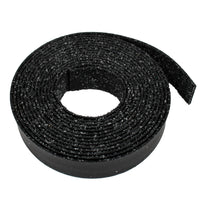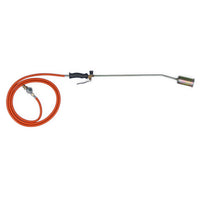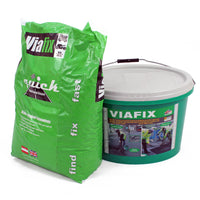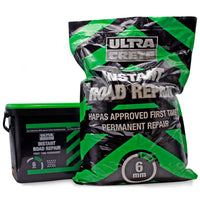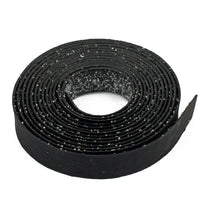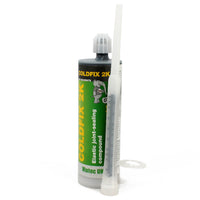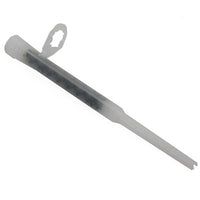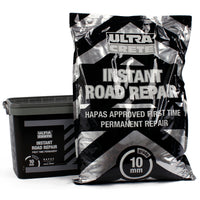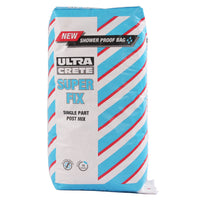How to Prevent Potholes: A Complete Guide for Safer, Longer-Lasting Roads
Potholes are a common problem across the UK, causing damage to vehicles, posing safety risks, and leading to costly repairs for businesses and local authorities. While fixing potholes is essential, preventing them in the first place is a more cost-effective and proactive approach.
In this guide, we’ll explain what causes potholes, how to prevent them, and the best practices to keep your roads and surfaces safe all year round.
What Causes Potholes?
Potholes typically form due to a combination of moisture, traffic stress, and temperature fluctuations. Here’s a breakdown of the most common contributing factors:
- Water infiltration: rainwater or melted snow seeps into cracks in the road surface.
- Freeze-thaw cycles: when water freezes and expands, it widens existing cracks.
- Heavy traffic: repeated pressure from vehicles weakens the road structure.
- Poor drainage: standing water accelerates surface degradation.
- Substandard maintenance: ignored cracks and minor damage worsen over time, eventually developing into potholes.
Understanding these causes is key to preventing potholes from forming in the first place.
How to Prevent Potholes: Practical Measures
There are several things you can do to try and reduce potholes forming on your surfaces, including:
Regular Surface Inspections
Routine inspections are crucial for early detection of cracks, rutting, and surface wear. Schedule inspections quarterly or after periods of severe weather, particularly in winter and early spring.
Crack Sealing
Crack sealing is a highly effective preventative measure. Sealing minor cracks with a joint sealant stops water ingress, reducing the risk of pothole formation. Address cracks when they first appear to avoid more costly repairs later.
Improve Drainage Systems
Poor drainage is a leading cause of potholes. Ensure that surface water is directed away from roadways by:
- Installing or maintaining materials drainage and gullies.
- Sloping surfaces to allow for natural water run-off.
- Clearing blockages from drains and culverts regularly.
Apply Protective Surface Treatments
Surface treatments like micro-surfacing, surface dressing, or seal coating create a waterproof barrier, reducing water penetration and protecting the asphalt beneath.
Use High-Quality Materials
Using durable, weather-resistant materials when laying new surfaces or making repairs increases longevity and resilience against pothole formation. Polymer-modified asphalts and reinforced concretes are recommended for high-traffic areas.
Schedule Preventative Maintenance
Being proactive is key and monitoring roadways and other surfaces will reduce maintenance costs over time. Things to take care of when you spot them include:
- Patching minor defects before they worsen.
- Overlaying worn surfaces with a new layer of asphalt.
- Implementing a long-term pavement management plan (PMP) to monitor surface conditions and schedule upkeep.
Control Heavy Vehicle Traffic
Where possible, redirect heavy goods vehicles (HGVs) away from vulnerable or newly laid surfaces. Overloading weakens the structure of the surface and increases the likelihood of potholes developing.
Prepare for Winter
Winter is a peak season for pothole formation because of the rapid changes in temperature. To reduce risk:
- Apply anti-icing measures in advance of freezing temperatures.
- Keep roads and pavements free from standing water before frost occurs.
- Have grit and de-icing equipment ready for quick deployment.
Making the Area Safe if Potholes Do Appear
Despite preventative efforts, potholes can still form, especially with the ever-changing British weather. Prioritise safety by:
- Using temporary barriers or cones to cordon off dangerous areas.
- Installing warning signage to alert drivers and pedestrians.
Never use ground protection mats to cover potholes, as it can cause the matting to crack. The ground underneath these mats should be structurally sound and free from significant depressions.
Instead, schedule prompt restoration using cold-lay tarmac repair kits like Viafix instant pothole repair to ensure that disruption and downtime is kept to a minimum.
Our helpful cold-lay tarmac guide will help you get the most out of your products.
Why Preventing Potholes Matters
Preventative action saves both time and money. According to data from KwikFit, pothole-related damage cost UK drivers an estimated £1.7 billion between 2024 and 2025. Additionally, unmaintained road surfaces increase the risk of accidents and can impact local economies by disrupting transport routes. Think back to how many times you’ve been frustrated by roadworks caused by local authorities having to fix potholes.
Preventing potholes is tricky and is an ongoing commitment that requires monitoring, investment, and strategic planning. By combining early detection, surface protection, and proper drainage, you can extend the life of your roads and surfaces, and reduce costly repairs.
Check out our full guide on repairing potholes for more tips and tricks.
Need Help with Surface Maintenance?
Whether you’re managing a private estate, commercial premises, or public highways, our team of experts can help you find the products you need to keep your business moving safely.
- Author






